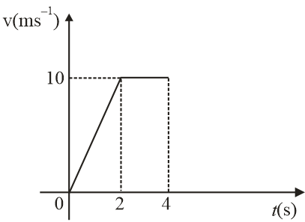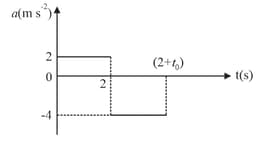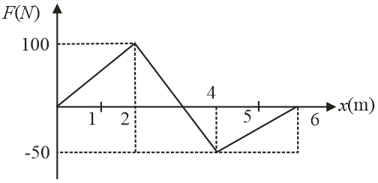A particle starts moving along the -axis from , its position varying with time as .
(a) At what time instant, is its velocity zero?
(b) What is the velocity, when it passes through the origin?

Important Questions on Basic Mathematics
A particle moves along the -axis obeying the equation , where is in and is in .
(a) Find the initial velocity of the particle.
(b) Find the initial acceleration of the particle.
(c) Find the time when the displacement of the particle is zero.
(d) Find the displacement when the velocity of the particle is zero.
(e) Find the acceleration of the particle when its velocity is zero.
The speed of a car increases uniformly from zero to in and then remains constant (figure).

(a) Find the distance travelled by the car in the first .
(b) Find the distance travelled by the car in the next .
(c) Find the total distance travelled in .
A car accelerates from rest with for and then decelerates constantly with for second to come to rest. The graph for the motion is shown in figure.

(a) Find the maximum speed attained by the car.
(b) Find the value of .
A stationary particle of mass is acted upon by variable force. The variation of force with respect to displacement is plotted in the figure below.
(a) Calculate the velocity acquired by the particle after getting displaced through .
(b) What is the maximum speed attained by the particle and at what time is it attained?

The acceleration of a motorcycle is given by , where and . The motorcycle is at rest at the origin at time .
(a) Find its position and velocity as functions of time.
(b) Calculate the maximum velocity it attains.
